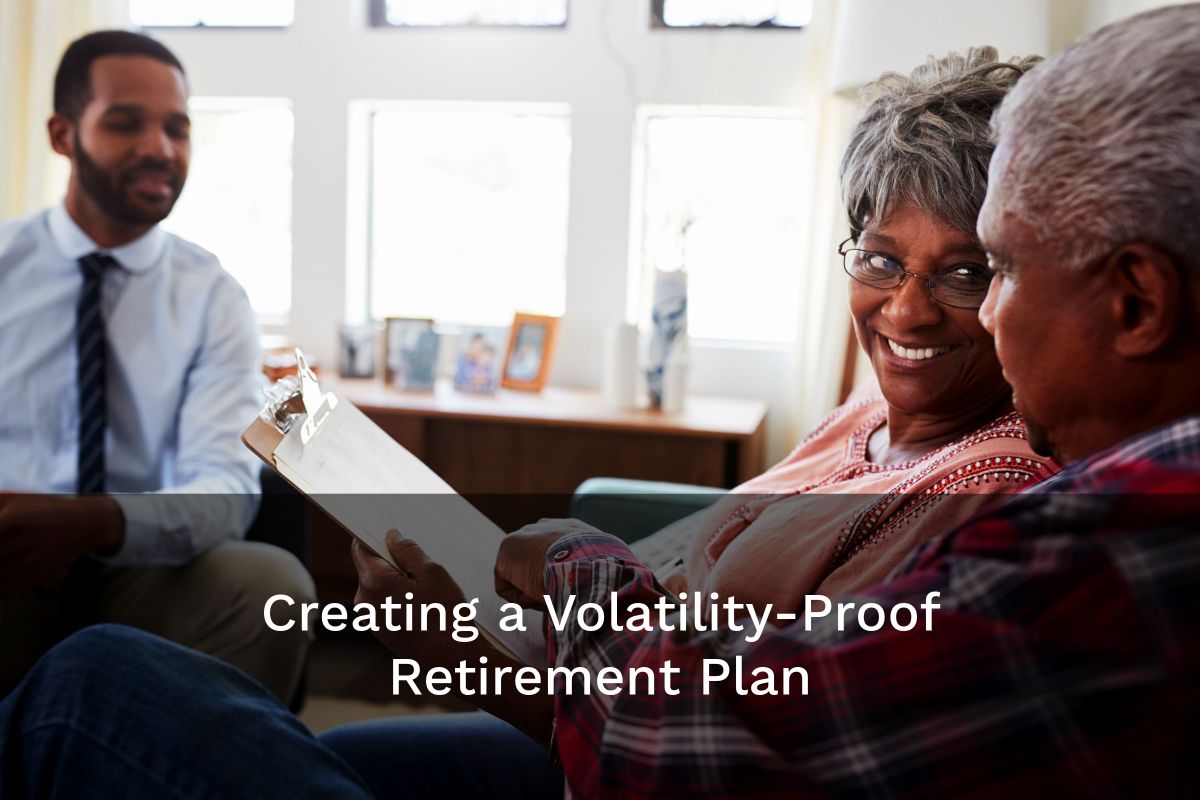Retirement planning is an essential part of preparing for a stable and comfortable future, but it comes with its fair share of challenges. One of the most significant challenges retirees face is market volatility. The ups and downs of the stock market can have a profound impact on retirement savings and income, potentially jeopardizing the financial stability of those who are unprepared. David McKnight, author of “The Power of Zero,” offers insightful strategies for creating a volatility-proof retirement plan. This article delves into his approaches for a volatility-proof retirement plan and provides actionable steps to help you build a more resilient retirement portfolio.
Understanding the Risks of Market Volatility
Market volatility refers to the fluctuations in the market prices of securities, such as stocks and bonds. These fluctuations can be triggered by various factors, including economic indicators, geopolitical events, and changes in interest rates. For retirees, market volatility can pose significant risks, as they are often dependent on their investment portfolios for income.
During periods of high volatility, the value of retirement savings can decrease sharply, affecting the amount of income generated from these investments. Additionally, retirees may be forced to sell assets at a loss to meet their income needs, further eroding their savings. Therefore, it is crucial to implement volatility-proof retirement plan strategies that can mitigate these risks and provide a more stable financial future.
Tax-Free Income Streams
One of the cornerstones of David McKnight’s approach to creating a volatility-proof retirement plan is the establishment of tax-free income streams, which you already know if you read this blog frequently. Tax-free retirement planning is something we specialize in at Hanson Wealth Management, and by utilizing tax-advantaged accounts such as Roth IRAs, Roth 401(k)s, and properly structured life insurance retirement plans (LIRPs), retirees can create income sources that are not subject to federal income taxes. This strategy offers several benefits:
Predictable Income: Tax-free income is not affected by changes in tax rates, providing a more predictable financial outlook.
Reduced Tax Liability: Minimizing taxable income helps avoid higher tax brackets and reduces overall tax liability.
Increased Flexibility: Having tax-free income options allows retirees to manage their withdrawals more effectively, reducing the need to sell investments during market downturns.
SEE ALSO: LIRP Explained: A Comprehensive Guide to Life Insurance Retirement Plans
Minimizing Tax-Deferred Accounts
Traditional IRAs and 401(k)s are popular retirement savings vehicles, but they come with the burden of required minimum distributions (RMDs) starting at age 72. These RMDs can push retirees into higher tax brackets and increase their exposure to market volatility. McKnight suggests gradually reducing the balances in these accounts through strategic withdrawals and Roth conversions.
Roth Conversions
Roth conversions involve transferring funds from a traditional IRA or 401(k) into a Roth account. While the converted amount is subject to income tax in the year of the conversion, future withdrawals from the Roth account are tax-free. This strategy can be particularly beneficial during years when your income is lower, potentially reducing the tax impact of the conversion.
By systematically converting portions of tax-deferred accounts to Roth accounts, retirees can reduce the size of their RMDs and lower their taxable income in retirement. This approach not only decreases tax liability but also mitigates the impact of market volatility on retirement income, helping to create a volatility-proof retirement plan.
Diversification and Asset Allocation
Proper diversification and asset allocation are fundamental principles of investment management. Diversification involves spreading investments across various asset classes, such as stocks, bonds, real estate, and commodities, to reduce exposure to any single asset’s risks. Asset allocation refers to the proportion of different asset classes in a portfolio, tailored to an individual’s risk tolerance, time horizon, and financial goals.
Benefits of Diversification
Risk Reduction: Diversifying investments helps mitigate the impact of poor performance in any one asset class.
Smoother Returns: A well-diversified portfolio is less likely to experience extreme fluctuations, leading to more stable returns.
Capital Preservation: By spreading risk, diversification helps preserve capital during market downturns.
Taken together, all three of these benefits help you to create a volatility-proof retirement plan.
Strategic Asset Allocation
David McKnight also emphasizes the importance of maintaining an asset allocation aligned with your risk tolerance and retirement objectives. As retirees approach and enter retirement, their portfolios should gradually shift towards more conservative investments, reducing exposure to high-risk assets like stocks. This approach helps protect the portfolio from significant losses during periods of market volatility.
SEE ALSO: Why You Can’t Count on a Lower Tax Bracket in Retirement
Long-Term Care Planning
Healthcare costs, particularly long-term care expenses, can pose a substantial risk to retirees’ financial stability. McKnight advocates for incorporating long-term care planning into retirement strategies. One effective tool is the Life Insurance Retirement Plan (LIRP), which I’ve written about before and which offers dual benefits:
Long-Term Care Coverage: LIRPs can be structured to provide coverage for long-term care expenses, reducing the financial burden on retirees.
Death Benefit: If long-term care is not needed, the policy provides a death benefit to beneficiaries, meaning the premiums paid are not wasted.
Regular Portfolio Review and Adjustments
Creating a volatility-proof retirement plan is not a one-time task. It requires regular review and adjustments to make certain the portfolio remains aligned with your financial goals and market conditions. Periodic reviews allow retirees to:
Rebalance Assets: Adjust the allocation of assets to maintain the desired risk level.
Assess Performance: Evaluate the performance of investments and make necessary changes.
Adapt to Life Changes: Incorporate changes in personal circumstances, such as health, spending needs, and retirement goals.
Would You Like to Create a Volatility-Proof Retirement Plan?
Creating a volatility-proof retirement plan involves a comprehensive approach that includes establishing tax-free income streams, minimizing tax-deferred accounts, diversifying investments, planning for long-term care, and regularly reviewing the portfolio. By implementing these strategies, retirees can mitigate the impact of market volatility and build a more stable and resilient financial future. David McKnight’s insights provide valuable guidance for those seeking to navigate the complexities of retirement planning and achieve financial security in their golden years.
Are you interested in learning more and not yet a client of Hanson Wealth Management? Schedule a strategy session with me and we can discuss retirement planning tools to help you accomplish your goals. I look forward to hearing from you!








